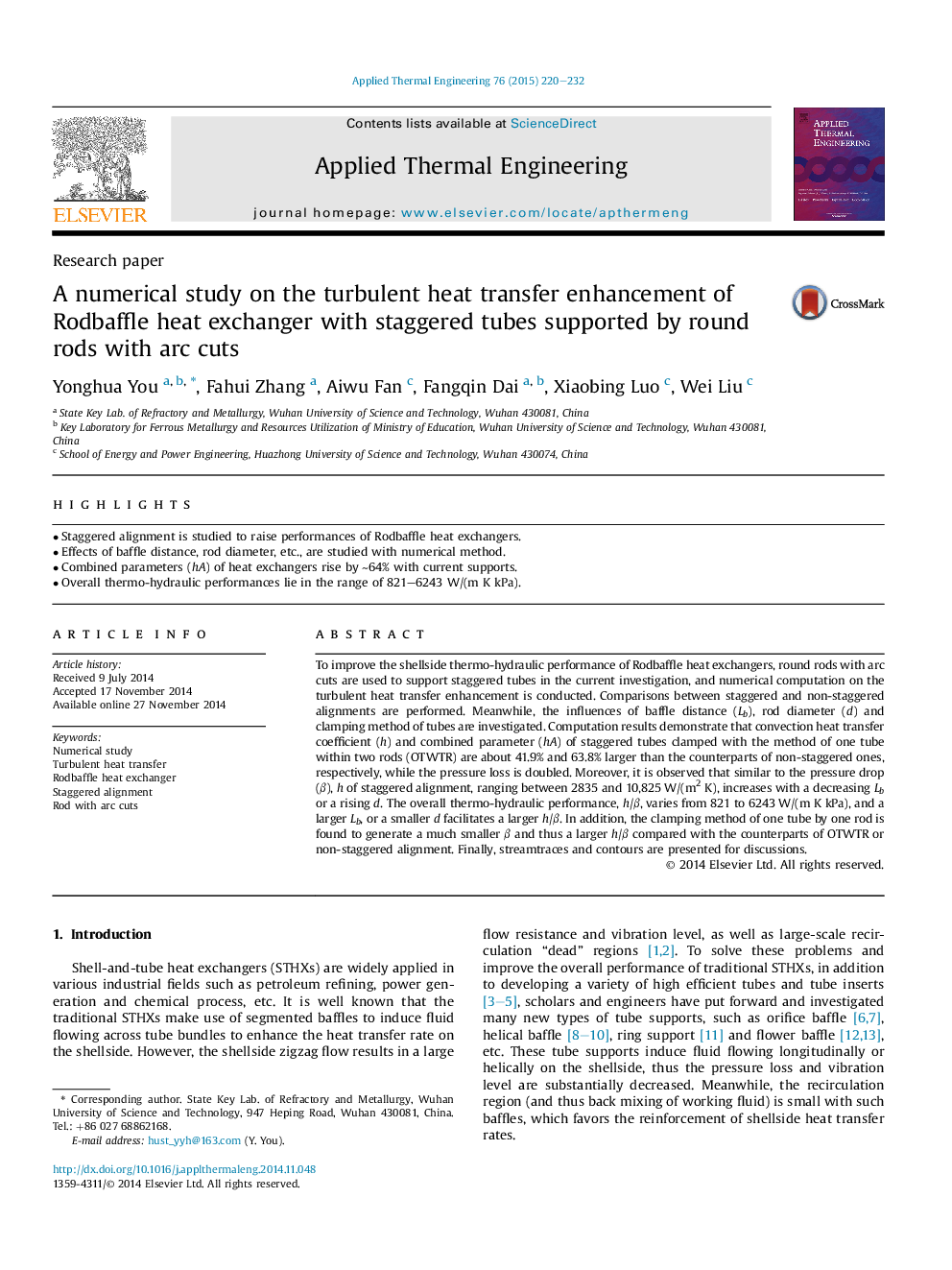| Article ID | Journal | Published Year | Pages | File Type |
|---|---|---|---|---|
| 646002 | Applied Thermal Engineering | 2015 | 13 Pages |
•Staggered alignment is studied to raise performances of Rodbaffle heat exchangers.•Effects of baffle distance, rod diameter, etc., are studied with numerical method.•Combined parameters (hA) of heat exchangers rise by ∼64% with current supports.•Overall thermo-hydraulic performances lie in the range of 821–6243 W/(m K kPa).
To improve the shellside thermo-hydraulic performance of Rodbaffle heat exchangers, round rods with arc cuts are used to support staggered tubes in the current investigation, and numerical computation on the turbulent heat transfer enhancement is conducted. Comparisons between staggered and non-staggered alignments are performed. Meanwhile, the influences of baffle distance (Lb), rod diameter (d) and clamping method of tubes are investigated. Computation results demonstrate that convection heat transfer coefficient (h) and combined parameter (hA) of staggered tubes clamped with the method of one tube within two rods (OTWTR) are about 41.9% and 63.8% larger than the counterparts of non-staggered ones, respectively, while the pressure loss is doubled. Moreover, it is observed that similar to the pressure drop (β), h of staggered alignment, ranging between 2835 and 10,825 W/(m2 K), increases with a decreasing Lb or a rising d. The overall thermo-hydraulic performance, h/β, varies from 821 to 6243 W/(m K kPa), and a larger Lb, or a smaller d facilitates a larger h/β. In addition, the clamping method of one tube by one rod is found to generate a much smaller β and thus a larger h/β compared with the counterparts of OTWTR or non-staggered alignment. Finally, streamtraces and contours are presented for discussions.
